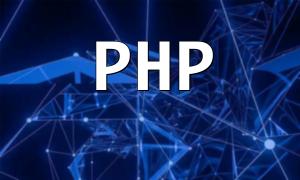1. Introduction
As the internet continues to evolve, the demand for real-time communication is growing rapidly. WebSocket, as an efficient bidirectional communication protocol, is being increasingly adopted by developers. This article will focus on PHP as the development language and explain how to implement WebSocket features. Whether you are a beginner or looking to expand your skills, this guide will help you understand the core concepts and practical implementation of WebSocket in PHP.
2. Basic Concepts of WebSocket
WebSocket is a bidirectional communication protocol that establishes a persistent connection between the client and server. This connection allows the server to actively push data to the client, reducing communication delay and bandwidth consumption. Compared to the traditional HTTP protocol, WebSocket offers significant advantages in real-time communication scenarios, making it ideal for chat applications, real-time data pushing, and more.
3. Basic Steps for Implementing WebSocket with PHP
- Create a WebSocket Server: When developing a WebSocket server with PHP, popular libraries such as Ratchet and Swoole are commonly used. In this article, we will use Ratchet to demonstrate how to set up a WebSocket server.
- Write WebSocket Event Handlers: The core of the WebSocket server is the event handler, which is responsible for handling client connections, message reception, and sending. In Ratchet, we implement the MessageComponentInterface and override its methods to create event handlers.
- Run the WebSocket Server: Once the event handler is implemented, we can start the WebSocket server using the command line tool and specify the port number for the server to listen on.
4. Implementing WebSocket Features
- Real-time Chat Functionality: With WebSocket's bidirectional communication feature, we can implement real-time chat functionality. In the event handler, we can listen for messages from clients and forward them to other connected clients.
- Real-time Data Push: WebSocket enables the server to actively push data to the client. In development, we can regularly fetch the latest data from the server and push it to all connected clients via WebSocket.
- Online User Count: WebSocket can also be used for tracking the number of online users. By maintaining a connection pool and tracking the status of each connection, we can provide real-time updates on the number of online users.
5. Conclusion
By following this guide, you should now have a solid understanding of WebSocket’s basic concepts, the steps to implement WebSocket with PHP, and how to add various features. As real-time communication technology continues to evolve, mastering WebSocket development is an invaluable skill. It not only enhances the real-time capabilities and interactivity of your projects but also lays the groundwork for more complex features in the future. I hope this article has helped you get started and that you’re now on your way to becoming proficient in WebSocket development!









